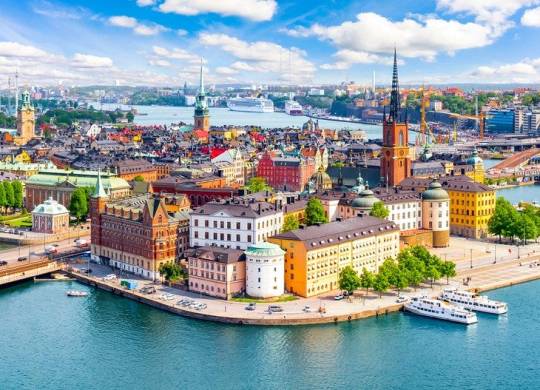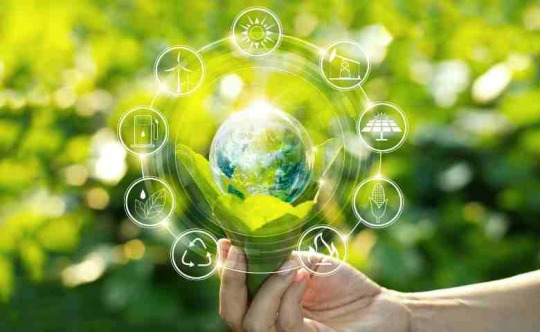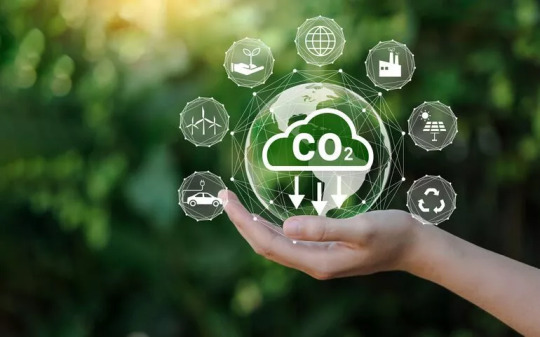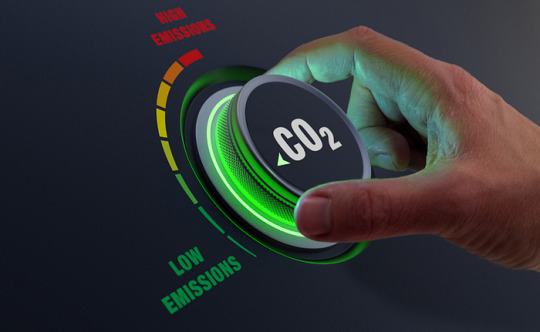Text
Embracing Sustainability
A Simple 5-Step Guide to Reducing Your Carbon Footprint with WOCE
30 September, 2023
WOCE Team

Introduction:
Are you eager to make a positive impact on the environment but don't know where to start? Look no further! In this article, we will guide you through 5 easy steps to help reduce your carbon footprint and embrace a sustainable lifestyle with the World Of Circular Economy (WOCE). By implementing these straightforward changes into your daily life, you can contribute to the fight against climate change and create a greener future for all.
From simple habits like conserving energy and water to making sustainable choices in transportation and waste management, every action has the potential to make a big difference. We will provide you with practical tips and tricks that are both effective and realistic to incorporate into your lifestyle. Whether you are a seasoned environmentalist or just getting started on your sustainability journey, these steps are designed to be accessible to everyone.
By following these 5 easy steps to reduce your carbon footprint, you will not only be making a positive impact on the planet but also inspiring those around you to do the same. Small changes can lead to significant results, and together we can create a greener and more sustainable world for generations to come. So, let's get started on this transformative journey today.

To embark on the journey of reducing your carbon footprint, it's essential to understand what carbon footprint means. Your carbon footprint refers to the total greenhouse gas emissions caused directly or indirectly by your activities. These emissions contribute to climate change, leading to rising temperatures, extreme weather events, and other environmental challenges.
The primary contributor to carbon footprint is the burning of fossil fuels, such as coal, oil, and gas, for energy production and transportation. Other activities like deforestation, industrial processes, and waste disposal also play a significant role. By reducing your carbon footprint, you can minimize your impact on the environment and help mitigate the effects of climate change.
Reducing your carbon footprint is important not only for the health of the planet but also for future generations. With each passing year, the consequences of climate change become more apparent, and urgent action is needed to prevent irreversible damage. By taking steps to reduce your carbon footprint, you are taking a stand for a sustainable and livable future.
The impact of carbon emissions on the environment
Carbon emissions have a profound impact on the environment, contributing to global warming, air pollution, and the depletion of natural resources. The excessive release of greenhouse gases, such as carbon dioxide (CO2), methane (CH4), and nitrous oxide (N2O), traps heat in the atmosphere, leading to the greenhouse effect.
Global warming caused by carbon emissions has resulted in rising sea levels, melting glaciers, and more frequent and severe weather events. Extreme temperatures and altered weather patterns disrupt ecosystems, leading to the loss of biodiversity and the destruction of habitats. Additionally, carbon emissions contribute to air pollution, which has detrimental effects on human health, causing respiratory problems, cardiovascular diseases, and even premature death.
It's clear that carbon emissions pose a significant threat to the planet and its inhabitants. By reducing our carbon footprint, we can help mitigate these harmful effects and create a more sustainable future.
Step 1: Energy Conservation
One of the most effective ways to reduce your carbon footprint is by conserving energy. Start by making simple changes to your daily habits, such as turning off lights and appliances when not in use. Unplug electronics that are not being used, as they continue to draw power even in standby mode. Opt for energy-efficient appliances and light bulbs, which consume less electricity.
Consider implementing more significant changes, like installing solar panels on your roof to generate renewable energy. Solar panels harness the power of the sun, reducing your reliance on fossil fuels and decreasing your carbon emissions. Additionally, insulating your home and using programmable thermostats can help regulate temperature and reduce energy consumption. One of the most effective ways to reduce your carbon footprint is by conserving energy. WOCE offers tips and solutions to help you make your home more energy-efficient, from simple changes in daily habits to installing solar panels.
Step 2: Sustainable Transportation
Transportation is a significant contributor to carbon emissions, but there are several ways to make your travel more sustainable. Whenever possible, choose public transportation, carpooling, or biking instead of driving alone. These options reduce the number of vehicles on the road, decreasing overall emissions.
If owning a car is necessary, consider investing in an electric or hybrid vehicle. These vehicles produce fewer emissions and are more fuel-efficient than traditional gasoline-powered cars. Additionally, maintaining your vehicle by regularly servicing it and keeping tires properly inflated can improve fuel efficiency and reduce emissions.
Step 3: Waste Reduction and Recycling
Proper waste management is crucial for reducing your carbon footprint. Start by minimizing waste generation through conscious consumption and avoiding single-use items. Opt for reusable products like water bottles, shopping bags, and coffee cups. When shopping, buy products with minimal packaging or choose items made from recycled materials.
Recycling is another essential aspect of waste management. Learn about your local recycling guidelines and make sure to separate recyclables from general waste. By recycling materials like paper, plastic, glass, and metal, you can conserve resources and reduce the energy required for manufacturing new products. WOCE can guide you in minimizing waste generation, recycling effectively, and reducing your environmental impact.
Step 4: Sustainable Food Choices
The food we eat also has a significant impact on our carbon footprint. Opt for locally sourced, organic, and seasonal produce whenever possible. Locally sourced food reduces transportation emissions, while organic farming practices minimize the use of synthetic fertilizers and pesticides, reducing environmental pollution.
Additionally, reducing meat consumption and incorporating more plant-based meals into your diet can have a substantial impact. Livestock production is a significant source of methane emissions, a potent greenhouse gas. By choosing plant-based alternatives and reducing meat consumption, you can lower your carbon footprint and improve your health.
Step 5: Green Household Practices
Incorporating green practices into your household routine can significantly reduce your carbon footprint. Start by reducing water consumption through simple actions like taking shorter showers, fixing leaky faucets, and collecting rainwater for outdoor use. Install water-saving devices like low-flow showerheads and toilets to further conserve water.
When it comes to cleaning products, opt for eco-friendly and non-toxic alternatives. Harsh chemicals in conventional cleaners contribute to air and water pollution. Look for products labelled as environmentally friendly or make your own cleaning solutions using natural ingredients like vinegar and baking soda.
Another way to reduce your carbon footprint is by maintaining a green garden. Grow your own fruits, vegetables, and herbs, using organic gardening practices. This reduces the need for transportation and packaging associated with store-bought produce and promotes biodiversity in your backyard.
By implementing these 5 easy steps to reduce your carbon footprint, you can make a significant impact on the environment. From conserving energy and choosing sustainable transportation to reducing waste and making eco-friendly food choices, every action counts. It's essential to remember that small changes can lead to significant results when it comes to sustainability.
Start by incorporating one step at a time into your daily life, and gradually build upon your efforts. Encourage your friends, family, and community to join you on this transformative journey. Together, we can create a greener and more sustainable world for future generations. So, let's take action today and make a big difference in reducing our carbon footprint.
Conclusion: Taking Action and Making a Difference with WOCE Creating a green household and reducing your carbon footprint is easier than you think, especially with the guidance and resources provided by the World Of Circular Economy. By adopting sustainable practices and making eco-conscious choices, you can significantly reduce your carbon footprint, create a healthier living environment, and contribute to a more sustainable future.
By following these 5 easy steps to reduce your carbon footprint with WOCE, you will not only be making a positive impact on the planet but also inspiring those around you to do the same. Small changes can lead to significant results, and together, with the World Of Circular Economy, we can create a greener and more sustainable world for generations to come. So, let's get started on this transformative journey today.
#carbon footprint#net zero emissions#co2 emissions#carbon credit price today in india#sustainability#greenliving
0 notes
Text
Top Countries Leading the Race towards Net Zero
A Closer Look at their Sustainable Development Goals
05 August, 2023
WOCE Team

As the world grapples with the urgent need to combat climate change, several countries have emerged as leaders in the race towards achieving net zero emissions. These forward-thinking nations have not only set ambitious targets to reduce greenhouse gas emissions, but they have also incorporated sustainable development goals into their strategies. In this article, we will take a closer look at the top countries leading the charge towards a sustainable future and examine how they are aligning their efforts with the United Nations’ Sustainable Development Goals (SDGs). From innovative renewable energy projects to transformative policies.
Join us as we delve into the strategies and initiatives of these trailblazing countries, highlighting their commitment to not only mitigating climate change but also fostering social and economic progress. Discover how these nations are redefining what it means to achieve net zero emissions and how their sustainable development goals are shaping their journey towards a more sustainable future.
Why net zero emissions are important for the environment
Net zero emissions refer to the balance between the amount of greenhouse gases emitted into the atmosphere and the amount removed or offset. Achieving net zero emissions is crucial to combating climate change and its devastating effects on the environment. By reducing greenhouse gas emissions to net zero, we can stabilize the global temperature increase and prevent catastrophic consequences such as extreme weather events, rising sea levels, and loss of biodiversity.
The transition to net zero emissions requires a holistic approach that encompasses various sectors such as energy, transportation, agriculture, and industry. It involves implementing renewable energy sources, improving energy efficiency, adopting sustainable land-use practices, and promoting circular economies. By embracing these strategies, countries can not only mitigate climate change but also create green jobs, enhance energy security, and improve public health.
The role of sustainable development goals in achieving net zero emissions
The United Nations’ Sustainable Development Goals (SDGs) provide a comprehensive framework for countries to address the interconnected challenges of sustainable development, including climate change. The SDGs consist of 17 goals, each with specific targets to be achieved by 2030. These goals encompass a wide range of issues, including poverty eradication, gender equality, clean energy, sustainable cities, and climate action.
In the context of achieving net zero emissions, sustainable development goals play a crucial role. They provide countries with a roadmap to integrate climate action into their overall development strategies. By aligning their efforts with the SDGs, countries can ensure that their transition to net zero emissions is socially inclusive, economically viable, and environmentally sustainable.
Exploring the top 5 countries leading the race to net zero emissions

1. Sweden
Sweden has emerged as a global leader in the race towards net zero emissions. With a strong commitment to sustainable development, this country has set ambitious targets to reduce greenhouse gas emissions and transition to renewable energy sources. Their sustainable development goals include achieving universal access to clean energy, promoting sustainable agriculture, and building resilient infrastructure.
To achieve these goals, Sweden has implemented various initiatives and policies, including:
1. Heavy investments in renewable energy projects, such as wind and solar farms.
2. Implementation of energy efficiency measures across different sectors.
3. Adoption of carbon pricing mechanisms to incentivize emission reductions and promote low-carbon technologies.
These efforts have led to significant outcomes:
1. Reduction of greenhouse gas emissions.
2. Creation of new job opportunities.
3. Stimulated economic growth.
2. Norway
Norway is another frontrunner in the race towards net zero emissions. They have recognized the importance of sustainable development and have integrated it into their national policies and strategies. Their sustainable development goals include promoting sustainable cities and communities, ensuring access to affordable and clean energy, and taking urgent action to combat climate change.
To achieve these goals, Norway has implemented a range of initiatives, including:
1. Investment in public transportation systems to diminish vehicle emissions.
2. Encouragement of electric vehicle use through incentives and infrastructure development.
3. Implementation of energy efficiency programs in buildings and industries, resulting in reduced energy and greenhouse gas emissions.
4. Active participation in international collaborations to share best practices and expedite the transition to a low-carbon economy.
3. Denmark
Denmark has demonstrated a strong commitment to sustainable development and has made significant progress towards achieving net zero emissions. Their sustainable development goals encompass a wide range of areas, including affordable and clean energy, sustainable consumption and production, and climate action.
To achieve these goals, Denmark has implemented innovative policies and initiatives, which include:
Renewable Energy Projects:
1. Investment in large-scale solar and wind farms.
2. Implementation of energy efficiency measures within buildings and industries.
Sustainable Land-Use Practices:
1. Adoption of reforestation and afforestation to absorb carbon dioxide from the atmosphere.
Positive Outcomes:
1. Reduction of greenhouse gas emissions.
2. Enhancement of energy security.
3. Improvement of air quality.
4. Switzerland
Switzerland has emerged as a leader in sustainable development and has made significant strides towards achieving net zero emissions. Their sustainable development goals include promoting sustainable economic growth, ensuring access to affordable and clean energy, and taking urgent action to combat climate change.
To achieve these goals, Switzerland has implemented transformative policies and initiatives, including:
Investment in Renewable Energy:
1. Emphasis on renewable energy sources like solar and wind power.
2. Implementation of energy efficiency measures within buildings and industries.
Sustainable Transportation Systems:
1. Promotion of electric vehicles.
2. Development of efficient public transportation networks.
Positive Outcomes:
1. Reduction of greenhouse gas emissions.
2. Creation of new job opportunities.
3. Stimulation of economic growth.
5. Austria
Austria is at the forefront of the race towards net zero emissions. Their sustainable development goals encompass a wide range of areas, including affordable and clean energy, sustainable cities and communities, and climate action.
To achieve these goals, Austria has implemented bold initiatives and policies, which include:
Investment in Renewable Energy:
1. Heavy investment in renewable energy projects, including offshore wind farms and solar power installations
Energy Efficiency Measures:
1. Implementation of energy efficiency measures across various sectors
2. Reduction of energy consumption and greenhouse gas emissions
Sustainable Transportation Systems:
1. Promotion of electric vehicles
2. Development of cycling infrastructure
Positive Outcomes:
1. Reduction of greenhouse gas emissions
2. Improvement of air quality
3. Enhancement of the quality of life for citizens
Key takeaways and lessons from the top country’s efforts

The efforts of the top countries leading the race to net zero emissions provide valuable lessons and insights for the global community. Firstly, their commitment to sustainable development goals has been instrumental in driving their transition to a low-carbon economy. By integrating climate action into their overall development strategies, these countries have ensured that their efforts are comprehensive and sustainable.
Secondly, international collaboration has played a crucial role in accelerating the transition to net zero emissions. The exchange of knowledge, best practices, and technologies has enabled countries to learn from each other and implement effective strategies. It is essential for countries to collaborate and support each other in achieving their sustainable development goals and mitigating climate change.
Lastly, the top countries’ efforts have demonstrated that achieving net zero emissions is not only crucial for the environment but also beneficial for social and economic progress. The transition to a low-carbon economy has created new job opportunities, enhanced energy security, and improved public health. It is a win-win situation that enables countries to address climate change while fostering sustainable development.
The importance of international collaboration for achieving net zero emissions
The transition to net zero emissions requires global cooperation and collaboration. No single country can achieve this goal alone. It is crucial for countries to work together, share knowledge and resources, and support each other in their efforts to mitigate climate change.
International collaboration can take various forms, including sharing best practices, technology transfer, financial support, and capacity building. By collaborating, countries can accelerate the transition to a low-carbon economy and achieve their sustainable development goals more effectively.
Furthermore, international collaboration can foster innovation and drive the development of new technologies and solutions. By pooling resources and expertise, countries can overcome common challenges and find innovative solutions to mitigate climate change.
Conclusion: The future of net zero emissions and sustainable development goals
The top countries leading the race to net zero emissions have shown that achieving this goal is not only possible but also beneficial for social, economic, and environmental progress. Their efforts to align with the United Nations’ Sustainable Development Goals have ensured that their transition to a low-carbon economy is holistic and inclusive.
As the world faces the urgent need to combat climate change, it is crucial for more countries to follow in the footsteps of these trailblazing nations. By setting ambitious targets, implementing transformative policies, and collaborating internationally, countries can pave the way for a greener and more sustainable future.
The journey towards net zero emissions and the achievement of sustainable development goals requires collective action and a commitment to long-term change. By working together, countries can create a world where economic prosperity and environmental sustainability go hand in hand. It is up to us to make the necessary changes and build a better future for generations to come.
#10 simple ways to reduce your carbon footprint#co2 emissions#carbon footprint calculation#carbon footprint#carbon credit price today in india#sustainability reporting#net zero emissions
0 notes
Text
10 Easy Ways to Reduce Your Carbon Footprint
Make a Positive Impact on Climate Change
10 August, 2023
WOCE Team

Are you looking for simple ways to combat climate change and reduce your carbon footprint? Look no further! In this article, we have compiled a list of 10 easy and effective strategies that you can implement in your daily life to make a positive impact on our planet.
With the growing concern over the environment, it's essential that we all take responsibility for our actions and make sustainable choices. From reducing energy consumption and embracing renewable energy sources to conserving water and practicing mindful consumption, there are numerous ways we can contribute to a greener future.
By incorporating these easy-to-follow tips into your routine, you'll not only be helping to combat climate change but also saving money and leading a healthier lifestyle. So, whether you're a seasoned environmentalist or just starting your eco-friendly journey, this article is filled with practical advice and actionable steps that anyone can take.
Start making a difference today by reducing your carbon footprint and creating positive change for the planet. Together, we can build a sustainable future for generations to come.
The Importance of Reducing Carbon Footprint

Reducing our carbon footprint is not only essential for the environment but also for our own well-being. By making sustainable choices, we can save money, improve air quality, and foster a healthier lifestyle. Additionally, taking action to reduce our carbon emissions sends a powerful message to policymakers and corporations, urging them to prioritize environmental sustainability.
Simple Lifestyle Changes to Reduce Carbon Footprint
1. Embrace a plant-based diet: The food industry is a significant contributor to greenhouse gas emissions. By reducing our consumption of meat and dairy products, we can significantly reduce our carbon footprint. Plant-based alternatives not only have a lower environmental impact but are also healthier for us.
2. Reduce, reuse, recycle: The mantra of waste management still holds true. By reducing the amount of waste we generate, reusing items whenever possible, and recycling materials, we can conserve resources and minimize the emissions associated with waste disposal.
3. Conserve energy at home: Simple actions like turning off lights when leaving a room, unplugging electronics when not in use, and using energy-efficient appliances can make a significant difference. Additionally, insulating your home and using natural lighting can help reduce energy consumption.
Energy-Efficient Practices at Home
4. Upgrade to LED lighting: LED bulbs are not only more energy-efficient but also last longer than traditional incandescent bulbs. By making this switch, you can save money on your energy bills and reduce your carbon footprint.
5. Optimize heating and cooling: Proper insulation, sealing gaps, and using programmable thermostats can help regulate indoor temperatures efficiently. Lowering the thermostat by just a few degrees during winter and raising it during summer can result in significant energy savings.
6. Use energy-efficient appliances: When purchasing new appliances, look for the Energy Star label. These appliances are designed to consume less energy without compromising performance.
Sustainable Transportation Options
7. Choose public transportation: Opting for public transportation, such as buses, trains, or trams, can significantly reduce your carbon emissions. If public transport is not accessible, carpooling or ride-sharing apps can be eco-friendly alternatives.
8. Walk or bike: For short distances, consider walking or biking instead of driving. Not only will you reduce your carbon footprint, but you'll also improve your health and fitness.
9. Invest in electric vehicles: If you're in the market for a new car, consider purchasing an electric vehicle (EV) or a hybrid. EVs produce zero tailpipe emissions and are becoming increasingly accessible and affordable.
Recycling and Waste Management
10. Follow proper recycling practices: Educate yourself on what can and cannot be recycled in your area. Rinse containers, separate recyclables, and dispose of hazardous waste responsibly. Remember, recycling is not a cure-all, so reducing and reusing should always be the first priority.
Conserving Water and Reducing Water Footprint
11. Fix leaks: A dripping faucet or a leaking pipe may seem insignificant, but they can waste hundreds of gallons of water every month. Regularly check for leaks and fix them promptly.
12. Install water-efficient fixtures: Install low-flow showerheads, faucets, and toilets to reduce water usage. These fixtures can significantly lower your water bills and conserve this precious resource.
Supporting Renewable Energy Sources
14. Switch to renewable energy: Consider installing solar panels on your property to generate clean, renewable energy. If that's not possible, explore options to purchase renewable energy from your utility provider.
15. Support renewable energy initiatives: Advocate for renewable energy policies and support organizations and businesses that prioritize clean energy. Encourage your local community to invest in wind, solar, and hydroelectric projects.
Advocating for Climate Action
16. Stay informed: Keep up-to-date with the latest climate change research and news. Educate yourself and engage in conversations about climate change with friends, family, and colleagues.
17. Vote for climate-conscious leaders: Support political candidates who prioritize climate change and have a history of advocating for environmental policies. Use your vote to influence climate action.
18. Join or support environmental organizations: Get involved with local environmental organizations and contribute your time, skills, or donations. These organizations play a crucial role in promoting sustainability and driving change.
13. Collect rainwater: Installing a rain barrel to collect rainwater can be used for watering plants or washing your car. This simple practice can help reduce strain on municipal water supplies.
Conclusion: Taking Action for a Sustainable Future

By implementing these 10 easy ways to reduce your carbon footprint, you can make a positive impact on climate change. Remember, every action counts, no matter how small. Whether it's adopting a plant-based diet, conserving energy at home, or supporting renewable energy sources, each step towards sustainability contributes to a brighter and greener future for all.
Start making a difference today and inspire others to join you on this crucial journey towards a sustainable future. Together, we can create a world where future generations can thrive in harmony with nature. Let's reduce our carbon footprint and make a positive impact on climate change!
#10 simple ways to reduce your carbon footprint#co2 emissions#carbon footprint calculation#carbon footprint#carbon credit price today in india#sustainability reporting#net zero emissions
0 notes
Text
Demystifying Net Zero Emissions
Understanding the Climate Council's Efforts to Tackle Carbon Footprint
19 August, 2023
WOCE Team
As the world grapples with the urgent need to curb greenhouse gas emissions, the concept of net zero emissions has gained increasing prominence. The Climate Council has emerged as a key player in this critical endeavor, spearheading efforts to tackle carbon footprints head-on. In this article, we will demystify the concept of net zero emissions and delve into the Climate Council's initiatives aimed at combatting climate change.
Net zero emissions refers to the balance between the amount of greenhouse gases emitted into the atmosphere and the amount removed or offset. Achieving net zero is crucial to halt the rise in global temperatures and mitigate the impacts of climate change. The Climate Council, an independent organization of experts, scientists, and policymakers, is dedicated to advancing this cause through research, education, and advocacy.
By understanding the Climate Council's efforts, we can gain valuable insights into the measures needed to transition toward a sustainable, low-carbon future. From promoting renewable energy sources to advocating for policy reform, the Council's strategies are aimed at empowering individuals, businesses, and governments to take meaningful action.
In this article, we will explore the Climate Council's ongoing work and shed light on the vital role it plays in creating a more sustainable and resilient future for our planet.
The importance of tackling carbon emissions
Carbon emissions are one of the primary drivers of climate change, leading to rising global temperatures, extreme weather events, and the loss of biodiversity. The need to reduce carbon emissions has never been more urgent. By transitioning to a low-carbon future, we can mitigate the impacts of climate change and secure a sustainable planet for future generations.
What is the Climate Council?
The Climate Council is an independent organization comprising experts, scientists, and policymakers who are dedicated to addressing climate change. Its mission is to provide authoritative information on climate science, promote renewable energy solutions, and advocate for policies that support the transition to a low-carbon economy. The Council operates through research, education, and advocacy, making it a driving force in the fight against climate change.
The Climate Council's role in addressing carbon footprint
The Climate Council plays a crucial role in raising awareness about the carbon footprint and its implications. By conducting research and providing accurate information, the Council helps individuals, businesses, and governments understand the urgency of reducing carbon emissions. Through its reports, publications, and media engagements, the Council acts as a catalyst for action, inspiring communities to take proactive steps towards a sustainable future.
Understanding Net Zero Emissions

Net zero emissions refer to achieving a balance between the amount of greenhouse gases emitted into the atmosphere and the amount removed or offset. It is a crucial goal in the fight against climate change as it aims to halt the rise in global temperatures. This can be achieved through a combination of reducing emissions, adopting renewable energy sources, and implementing carbon capture and storage technologies.
Strategies and technologies for achieving Net Zero Emissions
The Climate Council advocates for a range of strategies and technologies to achieve net zero emissions. These include transitioning to renewable energy sources such as solar and wind power, promoting energy efficiency in buildings and transportation, and implementing carbon capture and storage technologies. Additionally, the Council emphasizes the importance of supporting research and development in clean technologies to accelerate the transition to a low-carbon economy.
Challenges in transitioning to Net Zero Emissions
While achieving net zero emissions is an ambitious goal, it is not without its challenges. One of the major obstacles is the reliance on fossil fuels for energy production, which contributes significantly to carbon emissions. Transitioning to renewable energy sources requires significant investment, infrastructure development, and policy reforms. Additionally, changing consumer behavior and overcoming resistance from industries heavily reliant on fossil fuels can be challenging. However, with concerted efforts and collaboration, these challenges can be overcome.
Success stories of organizations achieving Net Zero Emissions
Despite the challenges, there have been remarkable success stories of organizations achieving net zero emissions. Companies like Google, Apple, and Microsoft have committed to powering their operations with renewable energy and have successfully reduced their carbon footprints. These organizations have implemented energy-efficient practices, invested in renewable energy projects, and offset their remaining emissions through carbon offset programs. These success stories serve as inspirations for other businesses to follow suit and demonstrate that achieving net zero emissions is not only possible but also economically viable.
How individuals can contribute to reducing carbon footprint
Individuals also have a crucial role to play in reducing carbon emissions and working towards net zero. Simple actions like conserving energy at home, reducing waste, and choosing sustainable transportation options can make a significant difference. By adopting energy-efficient practices, supporting renewable energy initiatives, and advocating for climate-friendly policies, individuals can contribute to the collective effort of combating climate change.
Conclusion and the future of Net Zero Emissions
The Climate Council's efforts in demystifying net zero emissions and promoting sustainable solutions are crucial in the fight against climate change. By understanding the concept of net zero emissions and the strategies needed to achieve it, we can collectively work towards a more sustainable and resilient future. With continued support from individuals, businesses, and governments, the vision of a net zero emissions world is within reach. It is up to all of us to embrace the necessary changes and take action to safeguard our planet for future generations.
In conclusion, the Climate Council's initiatives, research, and advocacy are instrumental in tackling carbon footprints and advancing the goal of net zero emissions. By shedding light on the importance of reducing carbon emissions, promoting renewable energy, and advocating for policy reforms, the Council is driving positive change and inspiring action at all levels. Together, we can create a sustainable and resilient future for our planet.
0 notes
Text
The Importance of Sustainability Reporting
How Businesses Can Create a Greener Future
In today's fast-paced world, sustainability has become more than just a buzzword; it has become a necessity for businesses to thrive. Consumers are increasingly conscious of the impact their purchases have on the environment and are demanding that companies take responsibility for their actions. Enter sustainability reporting – a way for businesses to showcase their environmental, social, and governance efforts to their stakeholders.
But what exactly is sustainability reporting? And why is it important? In this article, we will delve into the significance of sustainability reporting and how it can help businesses create a greener future.
Sustainability reporting goes beyond traditional financial reporting by providing a comprehensive view of a company's environmental and social impacts. It allows businesses to not only identify areas for improvement but also demonstrate their commitment to sustainable practices. By reporting their efforts transparently, companies can build trust and strengthen their reputation among consumers, investors, and other stakeholders.
Join us as we explore the various benefits of sustainability reporting and discover how businesses can leverage this powerful tool to drive positive change and contribute to a greener, more sustainable world. Together, let's unlock the potential for a brighter future.
What is sustainability reporting?
In today's fast-paced world, sustainability has become more than just a buzzword; it has become a necessity for businesses to thrive. Consumers are increasingly conscious of the impact their purchases have on the environment and are demanding that companies take responsibility for their actions. Enter sustainability reporting – a way for businesses to showcase their environmental, social, and governance efforts to their stakeholders.
But what exactly is sustainability reporting? And why is it important? In this article, we will delve into the significance of sustainability reporting and how it can help businesses create a greener future.
Why is sustainability reporting important for businesses?
Sustainability reporting goes beyond traditional financial reporting by providing a comprehensive view of a company's environmental and social impacts. It allows businesses to not only identify areas for improvement but also demonstrate their commitment to sustainable practices. By reporting their efforts transparently, companies can build trust and strengthen their reputation among consumers, investors, and other stakeholders.
Sustainability reporting encompasses a wide range of topics, including carbon emissions, waste management, water usage, employee well-being, community engagement, and supply chain sustainability. It involves collecting data, setting targets, implementing strategies, and measuring performance to drive continuous improvement in these areas. The ultimate goal of sustainability reporting is to create a more sustainable and equitable world for future generations.
Benefits of sustainability reporting
Sustainability reporting is important for businesses for several reasons. Firstly, it helps them identify and mitigate risks associated with environmental and social issues. By understanding their impacts and dependencies, companies can proactively address potential risks such as climate change, resource scarcity, and reputational damage.
Secondly, sustainability reporting can lead to cost savings and operational efficiencies. By measuring and managing their environmental impacts, businesses can identify opportunities for waste reduction, energy efficiency, and resource optimization. This not only benefits the environment but also improves the bottom line.
Thirdly, sustainability reporting is crucial for building trust and maintaining a positive reputation. Consumers are increasingly making purchasing decisions based on a company's sustainability practices. By transparently reporting their efforts, businesses can demonstrate their commitment to responsible practices and differentiate themselves in the market.
Key components of a sustainability report
Sustainability reporting offers numerous benefits for businesses. Firstly, it provides a platform for companies to communicate their sustainability goals, strategies, and progress to stakeholders. This transparency helps build trust and credibility, leading to stronger relationships with customers, investors, employees, and communities.
Secondly, sustainability reporting can drive innovation and business growth. By setting ambitious sustainability targets, businesses are motivated to find creative solutions to environmental and social challenges. This can result in new products, services, and business models that meet the evolving needs of customers while minimizing negative impacts.
Thirdly, sustainability reporting can enhance a company's competitiveness and attract investors. Many investors now consider environmental, social, and governance (ESG) factors when making investment decisions. By disclosing their ESG performance through sustainability reports, businesses can attract socially responsible investors and potentially lower their cost of capital.
How to create a sustainability reporting framework

A comprehensive sustainability report typically includes several key components. These include:
1. Executive Summary: A concise overview of the company's sustainability performance, goals, and achievements.
2. Company Profile: Background information about the company, including its mission, values, and governance structure.
3. Materiality Assessment: Identification of the most significant environmental, social, and governance issues relevant to the company and its stakeholders.
4. Targets and Performance: Clear targets and progress towards sustainability goals, including key performance indicators (KPIs) and metrics.
5. Stakeholder Engagement: Description of how the company engages with its stakeholders, including customers, employees, suppliers, communities, and investors.
6. Supply Chain Management: Assessment of the sustainability performance of the company's supply chain, including supplier engagement and responsible sourcing practices.
7. Risk Management: Identification and management of environmental and social risks and opportunities that could impact the company's long-term viability.
8. Governance and Ethics: Description of the company's governance structure, ethical principles, and management of conflicts of interest.
9. External Certification and Awards: Recognition and certifications received by the company for its sustainability efforts.
Examples of successful sustainability reporting
Creating a sustainability reporting framework requires careful planning and execution. Here are some steps to guide businesses in developing an effective framework:
1. Set Goals: Define clear and measurable sustainability goals that align with the company's mission and values. These goals should be ambitious yet achievable, with specific targets and timelines.
2. Engage Stakeholders: Identify key stakeholders and engage them in the sustainability reporting process. This can include employees, customers, suppliers, investors, and communities. Their input and feedback will help ensure the report is relevant and meaningful.
3. Collect Data: Collect accurate and reliable data on the company's environmental and social impacts. This may involve conducting internal audits, surveys, and data analysis. It is important to use standardized measurement methodologies and industry best practices to ensure consistency and comparability.
4. Set KPIs: Define key performance indicators (KPIs) that will be used to track progress towards sustainability goals. These KPIs should be relevant, measurable, and aligned with industry benchmarks.
5. Report and Communicate: Prepare a comprehensive sustainability report that provides a transparent and balanced view of the company's performance. This report should be easily accessible to stakeholders through various channels, such as the company's website, annual reports, and social media.
6. Monitor and Improve: Continuously monitor performance against targets and seek opportunities for improvement. Regularly update the sustainability report to reflect progress, challenges, and new initiatives.
Tools and resources for sustainability reporting
Several companies have set the benchmark for sustainability reporting. One such example is Patagonia – an outdoor clothing and gear brand known for its commitment to environmental and social responsibility. Patagonia's sustainability report provides a holistic view of the company's efforts, including its supply chain transparency, renewable energy investments, and advocacy for environmental causes.
Another notable example is Unilever – a multinational consumer goods company. Unilever's sustainability report focuses on its Sustainable Living Plan, which aims to improve the health and well-being of people and reduce environmental impacts. The report highlights the company's progress towards achieving its goals, such as reducing greenhouse gas emissions and improving water efficiency.
These companies demonstrate that sustainability reporting is not only a responsibility but also an opportunity to drive positive change and create a greener future.
The role of businesses in creating a greener future
Fortunately, there are numerous tools and resources available to support businesses in their sustainability reporting journey. Here are a few examples:
1. Global Reporting Initiative (GRI): GRI is an international organization that provides guidelines and standards for sustainability reporting. Their framework helps companies identify and report their economic, environmental, and social impacts.
2. Carbon Disclosure Project (CDP): CDP is a global platform that enables companies to measure, disclose, manage, and share environmental information. It focuses on climate change, water security, and deforestation-related risks and opportunities.
3. Sustainability Accounting Standards Board (SASB): SASB provides industry-specific standards for disclosing financially material sustainability information. Their standards help companies identify and report on the sustainability issues most relevant to their industry.
4. United Nations Global Compact (UNGC): UNGC is a voluntary initiative that encourages businesses to adopt sustainable and socially responsible policies. It provides guidance on reporting progress towards the Sustainable Development Goals (SDGs) set by the United Nations.
These resources, along with numerous sustainability reporting software platforms and consulting services, can help businesses navigate the complexities of sustainability reporting and ensure their reports are accurate, credible, and impactful.
Challenges and barriers to sustainability reporting

Businesses play a crucial role in creating a greener future. By adopting sustainable practices and reporting their efforts, companies can drive positive change at scale. Here are some ways businesses can contribute to a greener future:
1. Reduce Environmental Footprint: Implement strategies to reduce greenhouse gas emissions, minimize waste generation, conserve water, and protect biodiversity. This can include adopting renewable energy, implementing circular economy principles, and optimizing resource use.
2. Promote Social Equity: Ensure fair and ethical treatment of employees, suppliers, and communities. This includes providing safe working conditions, fair wages, and opportunities for professional development. Engage in philanthropic initiatives that address social challenges and support vulnerable communities.
3. Innovate for Sustainability: Continuously innovate and develop sustainable products, services, and business models. Embrace technologies and practices that reduce environmental impacts while meeting customer needs. Collaborate with industry partners, research institutions, and NGOs to drive innovation and knowledge sharing.
4. Advocate for Policy Change: Engage in policy advocacy to promote sustainability at the local, national, and international levels. Collaborate with governments, industry associations, and civil society organizations to shape policies that support sustainable development.
By taking these actions, businesses can drive the transition to a greener, more sustainable economy and contribute to a brighter future for all.
Conclusion: Taking the first step towards a sustainable future
While sustainability reporting offers numerous benefits, it also comes with challenges and barriers. Some common challenges include:
1. Data Collection and Verification: Gathering accurate and reliable data on environmental and social impacts can be time-consuming and resource-intensive. Ensuring data credibility through internal audits and external verification adds another layer of complexity.
2. Lack of Standardization: There is no universal framework for sustainability reporting, leading to inconsistency and lack of comparability between reports. Companies often struggle to choose the most appropriate reporting framework and metrics for their industry and stakeholders.
3. Limited Stakeholder Engagement: Engaging stakeholders in the sustainability reporting process can be challenging. Identifying the right stakeholders, obtaining their input, and addressing their concerns requires time, effort, and effective communication.
4. Short-Termism and Cost Concerns: Some businesses prioritize short-term financial performance over long-term sustainability goals. The perceived costs associated with sustainability initiatives and reporting can deter companies from fully embracing sustainability practices.
However, these challenges can be overcome with proper planning, commitment, and collaboration. Governments, industry associations, and civil society organizations can play a crucial role in addressing these barriers by providing guidance, harmonizing reporting frameworks, and promoting best practices.
#Net Zero emission#Carbon footprint#CO2 emission#Sustainability reporting#Carbon credit price today in India#Carbon footprint calculation 10 simple ways to reduce your carbon
1 note
·
View note
Text
Unveiling the Complexities
Why the Greening Effects of CO2 Emissions Are Hitting a Ceiling
As the global community grapples with the urgent need to mitigate climate change, the role of carbon dioxide (CO2) emissions in greening the planet has long been a topic of discussion. However, recent research suggests that these greening effects may be reaching a ceiling, unveiling the complexities of this process.
While it is true that plants use CO2 for photosynthesis, promoting growth and potentially increasing biomass, it is crucial to understand the intricate balance of other factors involved. Rising temperatures, nutrient availability, and water scarcity can all limit the positive effects of elevated CO2 levels on plant growth.
This article delves into the science behind the greening effects of CO2 emissions, examining the limitations and challenges faced in achieving sustainable greening outcomes. By uncovering the underlying complexities, it aims to provide a more nuanced understanding of the interplay between CO2 emissions, plant response, and their impact on the environment.
Join us as we dissect the latest research and shed light on the intricate relationship between CO2 emissions, greening, and the challenges we must overcome to foster a truly sustainable future.
Understanding the complexities of CO2 emissions and the environment
Carbon dioxide (CO2) emissions have long been recognized as a significant contributor to climate change. However, the impact of these emissions on the environment is not solely negative. In fact, CO2 has been known to have a greening effect on the planet. The idea behind this greening effect is that elevated CO2 levels can stimulate plant growth through increased photosynthesis. This has led some to believe that CO2 emissions might be beneficial for the environment. However, recent research is shedding light on the complexities of this process, suggesting that these greening effects are reaching a ceiling.
The concept of the greening effects and its limitations
The concept of the greening effect is rooted in the fundamental process of photosynthesis. Plants use CO2, along with sunlight and water, to produce energy in the form of carbohydrates. As CO2 levels increase, plants are able to uptake more CO2, leading to enhanced photosynthesis and potentially increased biomass. This has been observed in various ecosystems around the world, with studies showing an increase in vegetation cover in response to rising CO2 levels.
However, it is important to note that the greening effects of CO2 emissions are not universal. While some areas experience increased vegetation growth, others may not show the same response. This can be attributed to several factors, including temperature, nutrient availability, and water scarcity. Rising temperatures, for example, can offset the positive effects of elevated CO2 levels by accelerating plant respiration, which can lead to a decrease in net photosynthesis. Similarly, nutrient availability and water scarcity can limit the growth potential of plants, even with increased CO2 levels.
Factors contributing to the ceiling of greening effects

The ceiling of greening effects refers to the point at which the positive impacts of elevated CO2 levels on plant growth begin to plateau. Several factors contribute to this ceiling effect, with the most significant being nutrient availability. While CO2 can enhance photosynthesis, plants require other essential nutrients, such as nitrogen and phosphorus, to support their growth. If these nutrients are not readily available in the soil, the potential for increased growth due to elevated CO2 levels is limited.
Additionally, water scarcity can also play a role in restricting the greening effects of CO2 emissions. In some regions, increased CO2 levels can lead to a decrease in plant water use, known as stomatal conductance. While this can be beneficial in conserving water, it can also limit the amount of CO2 that plants can uptake, thus reducing the potential for increased growth.
Furthermore, the interplay between CO2 levels and other environmental factors, such as temperature and light availability, can also influence the ceiling of greening effects. Rising temperatures, as mentioned earlier, can offset the positive impacts of elevated CO2 levels, while changes in light availability can affect plant growth and photosynthesis rates.
Impacts of CO2 emissions on ecosystems and biodiversity
While the greening effects of CO2 emissions may seem beneficial on the surface, it is important to consider the broader impacts on ecosystems and biodiversity. Changes in vegetation cover can have cascading effects on other species that rely on these ecosystems for survival. For example, alterations in plant communities can affect herbivores that depend on specific types of vegetation for food. Similarly, changes in vegetation structure can impact the habitat suitability for various animal species, potentially leading to shifts in biodiversity patterns.
Moreover, the greening effects of CO2 emissions can also influence carbon cycling and the global carbon balance. Increased vegetation growth may result in higher carbon sequestration rates, potentially mitigating the effects of CO2 emissions on climate change. However, the long-term fate of this additional carbon is uncertain, as it can be released back into the atmosphere through processes such as decomposition and wildfires. Therefore, understanding the complex interactions between CO2 emissions, plant response, and ecosystem dynamics is crucial in assessing the overall impacts on biodiversity and the environment.
The role of feedback loops and tipping points
In addition to the limitations mentioned earlier, another important aspect to consider is the potential for feedback loops and tipping points. Feedback loops occur when the effects of a process reinforce or amplify its initial cause. In the context of CO2 emissions and the greening effect, feedback loops can arise through various mechanisms. For example, increased plant growth due to elevated CO2 levels can lead to changes in the water cycle, such as increased evapotranspiration. This, in turn, can affect regional rainfall patterns, potentially altering the availability of water for both plants and other organisms.
Tipping points, on the other hand, represent critical thresholds beyond which a system undergoes abrupt and often irreversible changes. In the context of the greening effects of CO2 emissions, tipping points can occur when the positive impacts of elevated CO2 levels on plant growth are outweighed by negative feedbacks or environmental constraints. Once a tipping point is reached, the greening effects may decline rapidly, leading to significant changes in ecosystems and their functioning.
Mitigation strategies to overcome the ceiling of greening effects
To address the ceiling of greening effects and ensure sustainable outcomes, several mitigation strategies can be employed. One approach is to focus on improving nutrient availability in ecosystems. This can be achieved through targeted fertilization or the use of organic matter to enhance soil nutrient content. By providing plants with the necessary nutrients, the potential for increased growth in response to elevated CO2 levels can be maximized.
Another strategy is to prioritize water management and conservation. Implementing efficient irrigation techniques and promoting water-saving practices can help ensure that plants have an adequate water supply, even in regions experiencing water scarcity. Additionally, enhancing water-use efficiency in plants through breeding or genetic engineering can further optimize the benefits of elevated CO2 levels on growth.
Furthermore, it is essential to address the root causes of CO2 emissions by implementing policies and practices that reduce greenhouse gas emissions. This includes transitioning to renewable energy sources, promoting energy efficiency, and adopting sustainable land-use practices. By reducing CO2 emissions, we can mitigate the overall impact on the environment and potentially alleviate some of the limitations of the greening effects.
Case studies and examples of the ceiling effect

To illustrate the concept of the ceiling effect and its implications, let's explore a few case studies. In the Amazon rainforest, researchers have found that while increased CO2 levels can enhance tree growth initially, nutrient limitations can prevent sustained growth over time. This highlights the importance of considering nutrient availability in understanding the full extent of the greening effects.
In agricultural systems, elevated CO2 levels have been shown to increase crop yields initially. However, without addressing nutrient limitations and water availability, the benefits may not be sustained in the long run. This emphasizes the need for integrated approaches that consider multiple factors to achieve sustainable outcomes.
Future prospects and challenges in addressing the ceiling effect
Looking ahead, addressing the ceiling effect of the greening effects of CO2 emissions presents several challenges. One key challenge is the need for interdisciplinary research and collaboration. Understanding the complex interactions between CO2 emissions, plant response, and ecosystem dynamics requires expertise from various fields, including ecology, climatology, and agronomy. By fostering collaboration, we can gain a more comprehensive understanding of the limitations and develop effective strategies to overcome them.
Another challenge is the need for long-term monitoring and assessment. The greening effects of CO2 emissions play out over extended periods, and it is crucial to track changes in vegetation cover, biodiversity, and ecosystem functioning over time. This will help us identify trends, detect potential tipping points, and assess the effectiveness of mitigation strategies.
Furthermore, addressing the ceiling effect requires a holistic approach that considers not only the environmental factors but also social and economic dimensions. Balancing the need for increased food production, sustainable land management, and climate change mitigation is a complex task that requires integrated solutions and policy frameworks.
Conclusion: Moving towards sustainable solutions for CO2 emissions
In conclusion, while the greening effects of CO2 emissions have provided some hope in mitigating the impacts of climate change, recent research suggests that these effects may be reaching a ceiling. Understanding the complexities of this relationship is crucial in developing sustainable solutions that consider the limitations and challenges involved.
By addressing factors such as nutrient availability, water scarcity, and the interplay between CO2 levels and other environmental factors, we can overcome the ceiling of greening effects. Through targeted mitigation strategies, interdisciplinary research, and long-term monitoring, we can foster a truly sustainable future that balances the benefits of CO2 emissions with the need to protect ecosystems and biodiversity.
Together, we can unravel the complexities of CO2 emissions, embrace the challenges, and pave the way for a greener and more sustainable planet.
#Net Zero emissions#carbon footprint#co2 emissions#sustainability reporting#carbon credit price today in india#Carbon footprint calculation#10 simple ways to reduce your carbon footprint
0 notes
Text
Net zero by 2070: India’s shift to e-mobility
30 September, 2022
WOCE Team

By committing an economy to a 1 billion tonne reduction in predicted carbon emissions by 2030, India’s net zero objective for 2070 demonstrates the intention to undertake decarbonization. The inter-sectoral contributions of states, industries and companies will be essential in accomplishing this aim, even though this lays out a clear path for India to take.
In India, the transportation sector is one of the major emitters. India must prioritise this area if it is to reach the net zero goal. Without quick electrification of vehicle fleets, emissions associated with transportation will soar by 2050, significantly hastening climate change. Critical actions, such as the following, are urgently needed to create an EV ecosystem in India.
Infrastructure fees for business parks and public roads
Medium and long-haul freight as well as the electrification of last-mile delivery, powered by renewable energy
Government at work: Strengthening policy backing

The Indian government has created the conditions for quick uptake of electric mobility. To support reaching the target of 30% EVs by 2030, a clever combination of purchase reductions across a variety of vehicle categories, lower road taxes, and scrapping and retrofit incentives is needed. The cost of oil imports, rising pollution, and India’s international responsibilities to combating climate change are the driving forces behind its recent measures to quicken the transition to e-mobility.
1. Demand incentives for Faster Adoption and Manufacturing of Hybrid and Electric Vehicles (FAME II)
Around 160,000 EVs had received demand incentives totaling $75 million USD under FAME II as of November 2021. More than 6,300 e-buses, 2,870+ EV charging stations in 68 cities, and 1,576 charging stations on nine expressways and 16 motorways have all been approved by the incentive programme. All this could hasten the adoption of electric two-wheelers, three-wheelers, and e-buses throughout the nation.
2. Production-linked Incentive (PLI) Programme
The Indian government launched a 2.4 billion USD PLI project for ACC storage manufacture in May 2021 to build a local manufacturing capacity of 50 GWh of ACC and 5 GWh of “niche” ACC capacity. This would increase capacity, localise the EV supply chain, and reduce dependency on imports. Reliance, Hyundai, Ola, and M&M are just a few of the well-known Indian companies that have submitted bids totaling roughly 130 GWh.
To promote the production of electric and hydrogen fuel cell vehicles, the central government also authorised 3.4 billion USD for automobiles and automobile components in September 2021.
3. State policies on EV
EV-specific policies have been enacted by several states. Incentives on the supply side include:
Subsidy for a capital interest
Refunds for stamp duties
Tax exempt status
Refund for state goods and services tax (SGST)
Offering interest-free loans will encourage EV manufacturers.
There are financial incentives, exemptions from road tax, and registration fee reductions on the demand side.
The governments of Delhi and Maharashtra have made announcements about initiatives to hasten the adoption of EVs. By 2024, EVs in Delhi are expected to account for 25% of all new vehicle registrations. By 2025, 10% of all new vehicle registrations in Maharashtra will be electric vehicles.
Companies setting the bar high: Ambition and action

Exide and Amara Raja Batteries, two well-known producers of automotive lead-acid batteries, are pioneers in focusing fresh investments on environmentally friendly technologies like lithium-ion batteries. In response to the opportunity offered by India’s EV industry, business leaders like OLA Electric, Ather Energy, and Mahindra Electric are rapidly growing their market presence.
Due to soaring demand, Ather Energy plans to produce 1 million electric scooters annually.
A 2 billion USD investment was made by Ola’s “Future Factory” to produce 10 million electric scooters annually.
TPEML, a recently established EV subsidiary of Tata Motors, was created to manufacture, design, and develop EV-related services.
Together with Mahindra Group, Hero Electric produces more than 1 million electric two-wheelers annually.
In addition, EV100 members, who are dedicated to a 100% switch to EVs by 2030, are setting the demand side
To hasten the switch to electric vehicles in the last-mile delivery sector, Flipkart has teamed with Hero Electric, Mahindra Electric, and Piaggio.
Initiated by Dalmia Cement, the e-trucks initiative aims to deploy 22 electric trucks by 2022.
The JSW Group has a new EV policy that enables incentives for employees to buy electric two-wheelers or four-wheelers up to $300,000.
Even though the government and private sector are now aware of the enormous benefits of EV adoption, more work needs to be done to accelerate the switch to EVs in India. The demand for the uptake of sustainable transportation must be fueled by the Indian corporate sector. They can also effectively transform outmoded processes by inspiring fresh business concepts.
By increasing EV demand, influencing legislation, and promoting mainstream adoption to make electric transport the new normal by 2030, initiatives like EV100 are extending the frontiers to create a conducive climate for the transition to e-mobility. The ability of EVs to reduce emissions will continue to increase as India’s energy infrastructure becomes more environmentally friendly and new ways to obtain clean electricity surface.
#net zero emissions#carbon footprint#co2 emissions#sustainability reporting#carbon credit price today in india#Carbon footprint calculation#10 simple ways to reduce your carbon footprint
1 note
·
View note